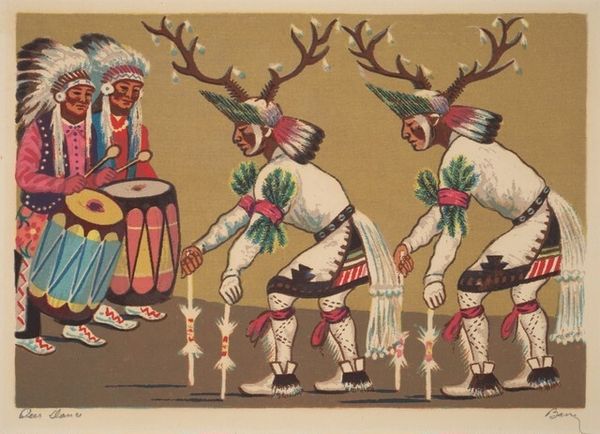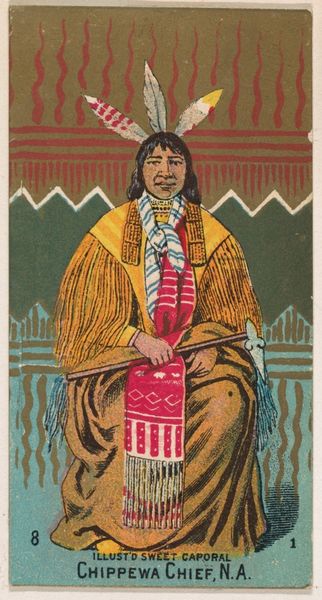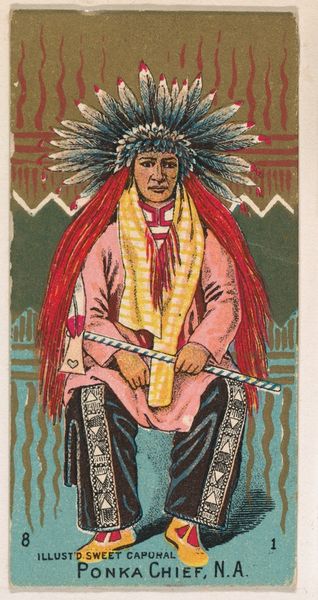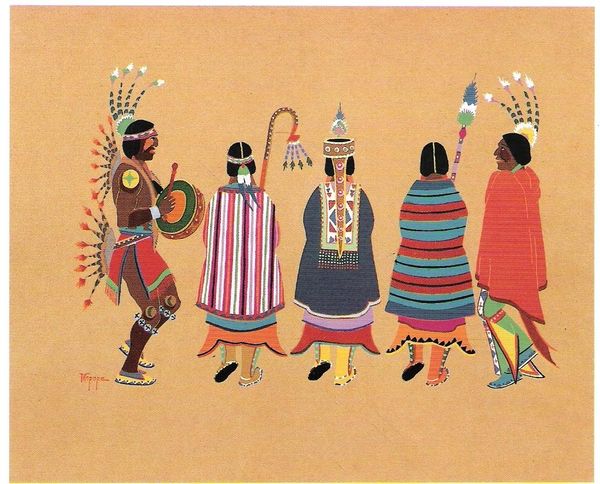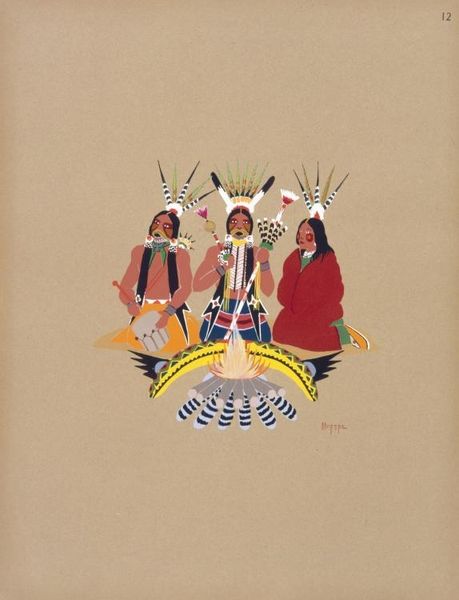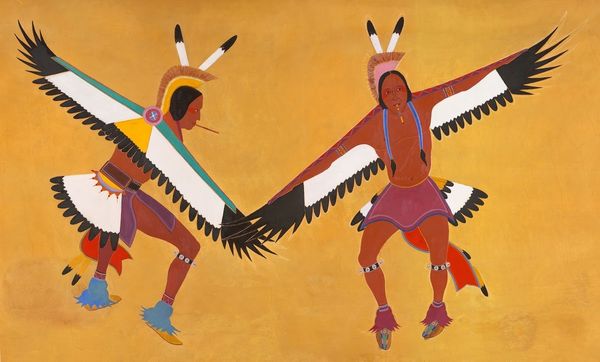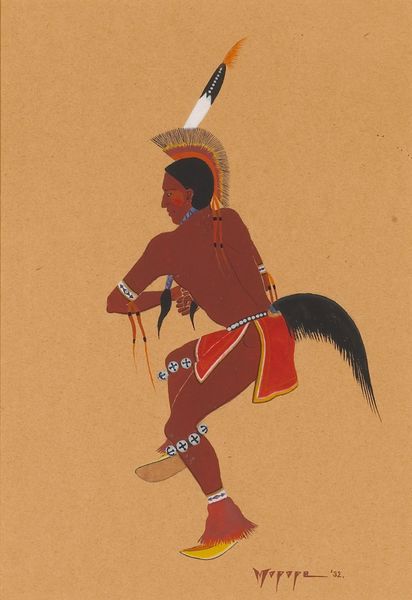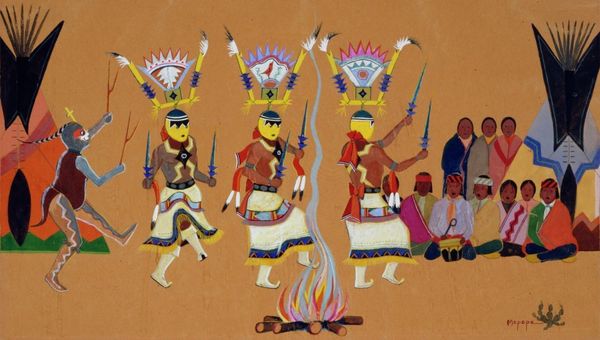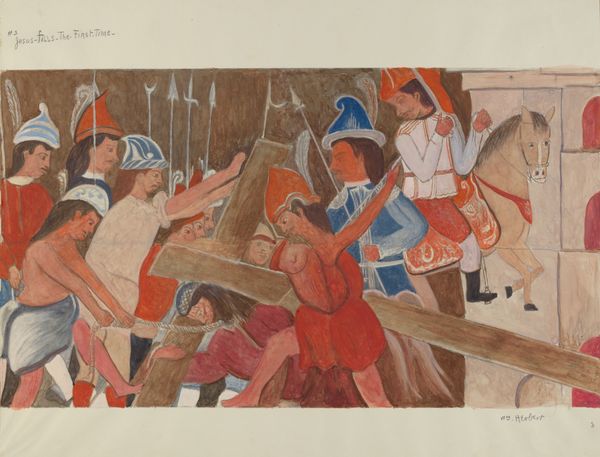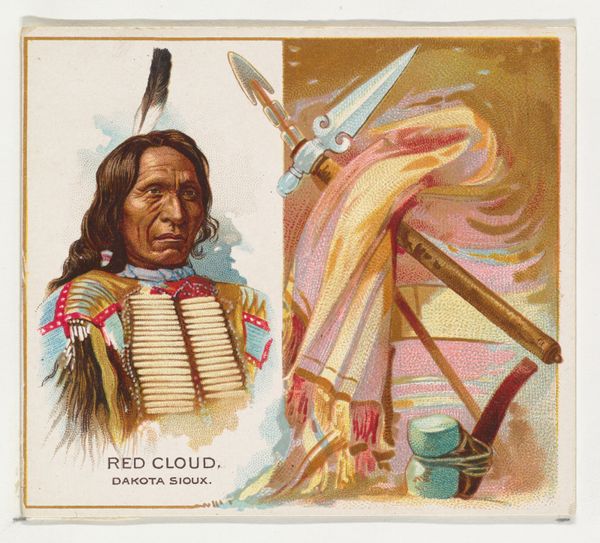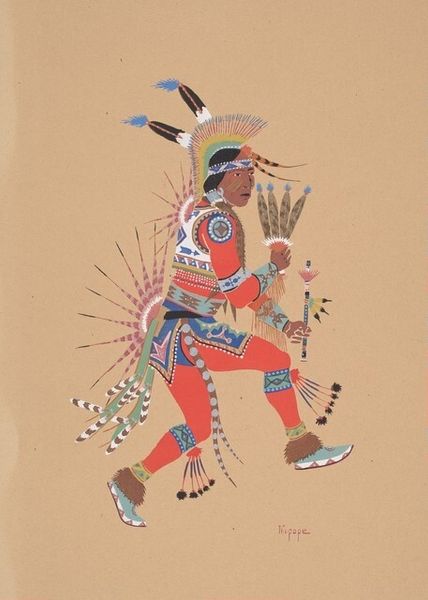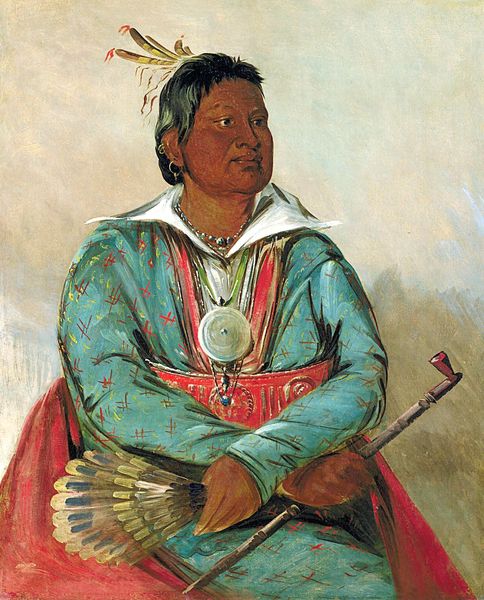
painting
#
portrait
#
narrative-art
#
painting
#
figuration
#
indigenous-americas
Copyright: Stephen Mopope,Fair Use
Curator: This painting is called "Kiowa Flute Player" by Stephen Mopope, part of the Indigenous Americas art movement and seemingly rendered with acrylic paint. What strikes you first? Editor: It's remarkably decorative, a bit flat in its rendering, yet vivid. The palette and strong lines give it a striking two-dimensionality, despite the attempt at figuration. Curator: Precisely. Note how Mopope, a member of the Kiowa Six, uses the figure of the flute player. It serves as a visual key, harmonizing elements like the linear treatment of the falling ornamentation from the flute with the teepee's structure, almost reducing it to a pattern. Editor: I'm more interested in the context of that teepee – its construction, the materials used. It points to a nomadic lifestyle, a resourcefulness that is both functional and beautiful, informing the entire visual culture captured here. And consider the flute itself – wood carved with precision. Curator: Consider also the dynamic opposition created by the darker and angular blue lines of his shirt against the ochre plane, further destabilizing depth. The layering creates an overall visual tension in defiance of true space. Editor: It speaks to how indigenous art practices, even when adopting modern materials like acrylics, retain a connection to traditional craft and resourcefulness. The materiality matters: what’s available, what's valued, what’s transformed through labor and skill. Look at how the depiction of clothing becomes as significant as the figures themselves. Curator: In closing, one observes the piece’s semiotic density; each stroke, a visual signifier oscillating between representation and pure form. The depicted subjects are indeed part of an elaborate pictorial code that rewards meticulous observation and compositional study. Editor: Indeed. From a materialist lens, we might also value these depictions of quotidian life—clothing, architecture—as evidence and reflection of labor, skill, and creative reuse within a community.
Comments
No comments
Be the first to comment and join the conversation on the ultimate creative platform.
